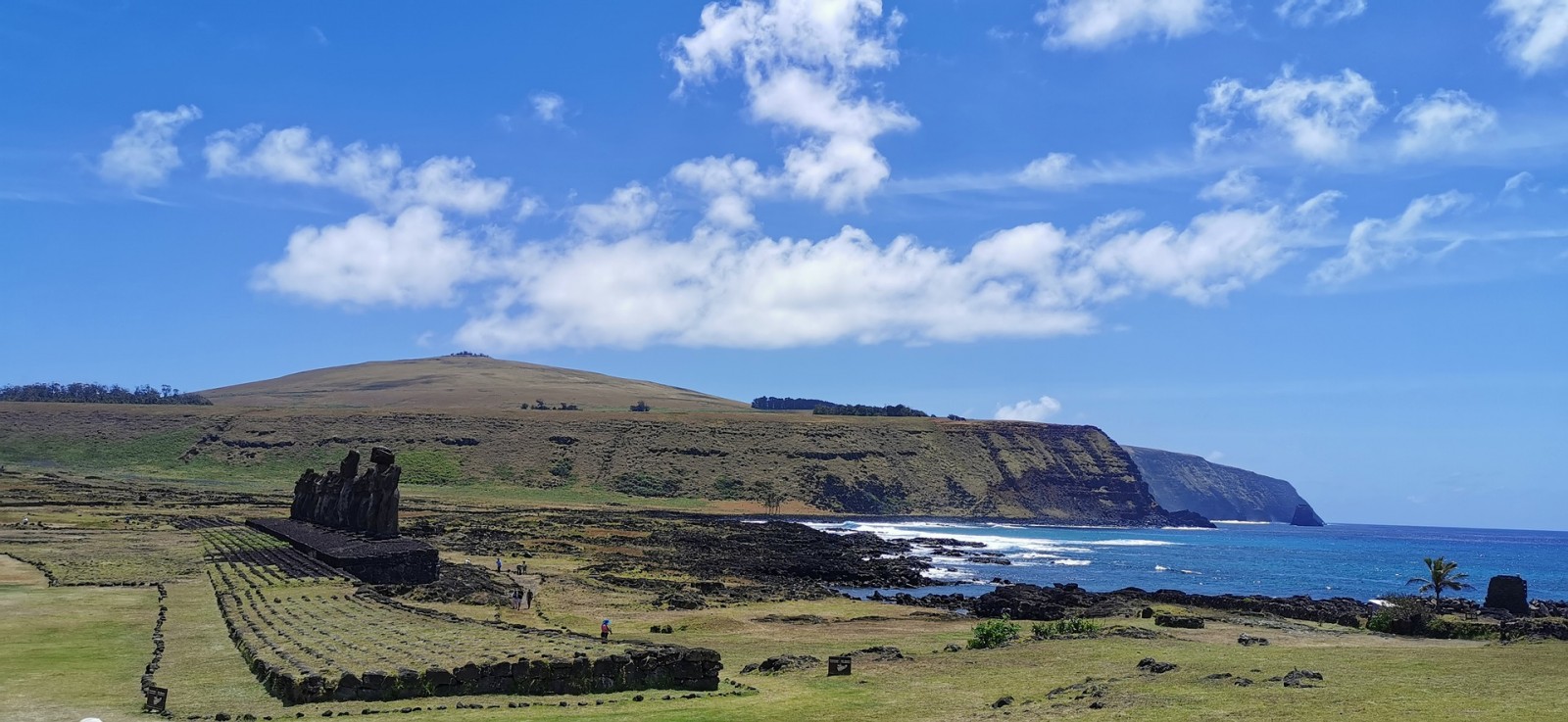Sustainable archaeology: Research into Easter Island’s past may aid its residents today

Remote and surrounded by a horizon of unbroken sea, Easter Island seems to have no shortage of water.
But water — specifically fresh water — has long been a struggle for its people, who have historically relied on it not only for drinking but for agriculture. Rapa Nui, as it’s known in the native language, is also prone to periodic drought and its groundwater wells — dug decades ago to provide water for communities there — are becoming salinated as seawater rushes in. Climate change will likely make the problem worse.
The solution may lie in looking into Rapa Nui’s past. Binghamton University anthropologists Robert DiNapoli and Carl Lipo received a $60,280 grant from the National Geographic Society’s Committee for Research and Exploration to do just that. Their project, “Sustainable freshwater management: a deep-time perspective from Rapa Nui (Easter Island),” will explore how ancient populations managed freshwater scarcity.
Over the past decade, one of their main research questions has centered on the resources critical for ancient Rapa Nui communities, explained DiNapoli, a postdoctoral research associate in environmental studies and anthropology. In addition to fishing areas, garden soil and rainfall, these important resources also include fresh water, particularly for communities not located near the island’s marshland and two crater lakes.
“We’ve been analyzing accounts in ethno-historic data and also the environment of the island, which has pointed to the fact that people are probably getting water from coastal seeps, which are areas where fresh groundwater seeps out at the shoreline,” DiNapoli said.
Their previous research and part of DiNapoli’s doctoral dissertation argued that the locations of ancient communities were tied into these coastal groundwater spots. Such seeps may have been resilient to drought and could have been a buffer during previous climate changes that reduced rainfall.
“People in the past were using these water sources, most likely to deal with the environmental constraints and climate constraints on the island,” DiNapoli explained. “As rainfall would decrease or the lakes would dry up, they might be focusing on these more dependable water sources.”
However, they still don’t know much about how long these water sources were used, their quality, their variation from place to place or their dependability.
The grant will allow the researchers to stay on the Pacific island during seasons with very different environmental conditions: summer and winter. Rapa Nui is located in the Southern Hemisphere, so their first scheduled field season this December actually takes place during the island’s summer.
It’s easier to identify coastal seeps during the summer because of the temperature differential between the cool groundwater and warmer sea water, DiNapoli explained. During that trip, they will target two different freshwater locations to see if there are differences between them.
On the second trip, during Rapa Nui’s winter, they will look for additional inland water resources. The inland portions of the island are riddled with gullies, some of which were dammed in ancient times to collect water, DiNapoli said. During the Southern Hemisphere wintertime trip, scheduled for May 2022, he and Lipo will identify the location of these ancient dams.
The archaeology of sustainability not only explores successful strategies used by people in the past to overcome environmental constraints, but how these techniques can potentially be applied in the future. To that end, the information they gather will be provided to the Rapa Nui people to aid with freshwater management and resource planning, said Lipo, a professor of anthropology and environmental studies and associate dean of Harpur College.
“Like all the Pacific islands, climate change is going to dramatically impact the availability of fresh water, from increasing sea levels to storm surges and less predictable rainfall patterns,” Lipo said. “We are going to get more detailed knowledge about groundwater and the water system as a whole, which is a great opportunity to balance the archaeology side with directly contributing to the people.”
